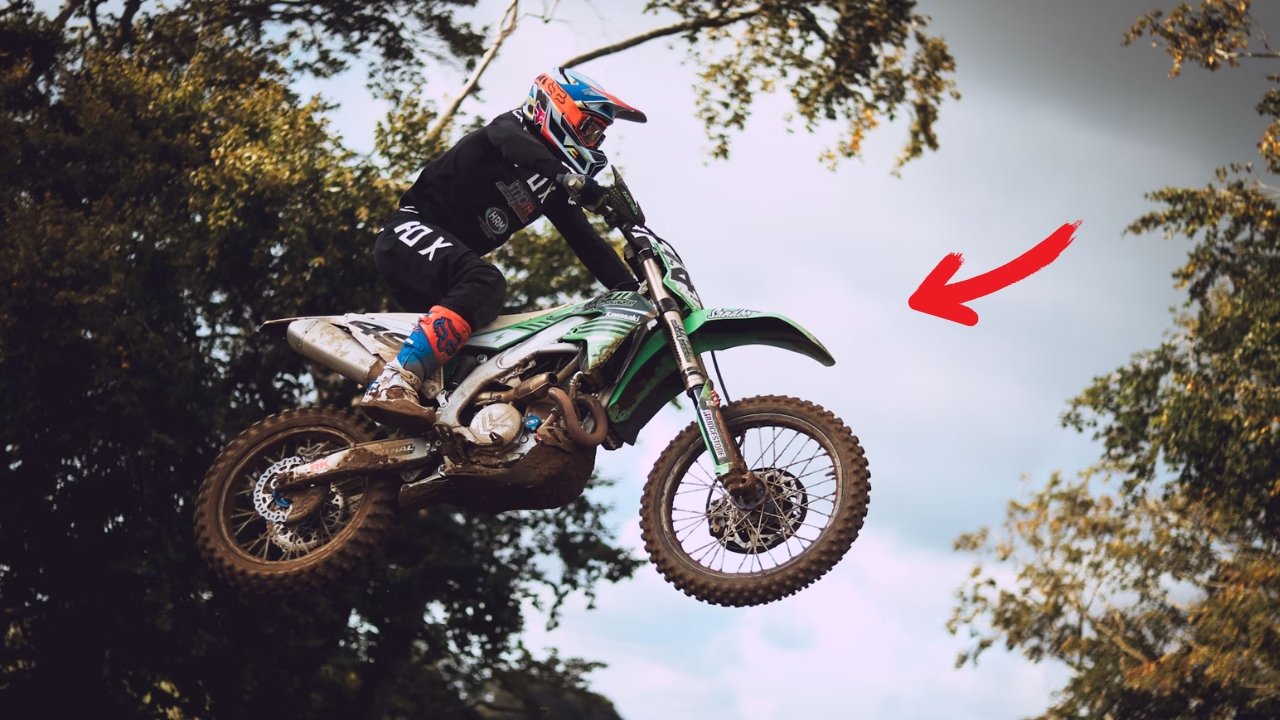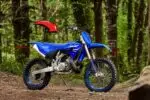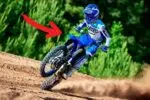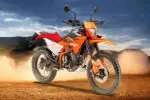Top 10 Dirt Bike Riding Tips for Beginners: Mastering the art of riding a dirt bike doesn’t happen overnight. It’s a thrilling activity that demands patience, preparation, and practice. Whether you’re just getting started or brushing up on your skills, the journey to becoming a confident dirt biker begins with understanding the basics and putting safety first.
In this guide, we’ll walk you through essential tips to help you improve your riding technique, choose the right equipment, and avoid common mistakes that can lead to injuries or setbacks. Let’s dive into the top tips every beginner dirt bike rider should know.
Contents
- 1 Tip #1: Pick the Right Dirt Bike Size for You
- 2 Tip #2: Gear Up for Safety
- 3 Tip #3: Learn Proper Body Positioning
- 4 Tip #4: Master Throttle Control
- 5 Tip #5: Learn Gear Shifting and Clutch Use
- 6 Tip #6: Lean Into Turns for Stability
- 7 Tip #7: Understand Braking Techniques
- 8 Tip #8: Approach Jumps and Obstacles with Care
- 9 Tip #9: Build Confidence with Practice
- 10 Tip #10: Don’t Skip Regular Maintenance
- 11 Frequently Asked Questions (FAQs)
Tip #1: Pick the Right Dirt Bike Size for You
Before revving up the engine, your first task is choosing a dirt bike that matches your body size, skill level, and riding purpose. Dirt bikes come in various types depending on the terrain you plan to conquer — whether it’s trail riding, motocross, hill climbing, or flat-track racing.
Here’s a quick reference to help you decide:
| Rider Category | Recommended Bike | Engine Size | Best For |
|---|---|---|---|
| Young Riders | Mini Dirt Bikes | Below 110cc | Kids or smaller individuals |
| Adult Beginners | Mid-size Bikes | Up to 250cc | Adults just starting out |
| New Learners | Standard Bikes | 125–250cc (4-stroke) | Easy to handle and control |
| Experienced Riders | High-power Bikes | 250cc+ | Riders with street or off-road experience |
Choosing the correct bike enhances your confidence, helps you build skills, and ensures your safety while learning the ropes.
Tip #2: Gear Up for Safety
Once your bike is ready, the next essential step is wearing proper protective gear. Dirt biking involves a fair amount of risk, so protecting yourself is non-negotiable.
Here’s a list of must-have safety gear:
- Certified Full-Face Helmet (Look for DOT, ECE, or SNELL ratings)
- Gloves for better grip and hand protection
- Dirt Bike Goggles to keep your eyes safe from dust and debris
- Long-Sleeved Shirt and Pants for abrasion protection
- Riding Boots that cover your ankles
When selecting a helmet, ensure it fits snugly, has proper ventilation, a large eye port for goggles, and a strong chin bar. High-quality materials like carbon fiber offer better protection and comfort. Consider pairing your helmet with body armor—chest protectors, knee pads, and jackets with ventilation—to reduce impact injuries.
Tip #3: Learn Proper Body Positioning
Body position plays a major role in controlling your dirt bike. While seated, grip the bike with your knees, keep your elbows out, and maintain a relaxed hold on the handlebars. Your head should always be up, looking ahead at where you’re going.
Standing vs. Sitting
- Standing is recommended for rough terrains, as it offers better control and balance.
- Sitting is better for cruising on flat trails or resting between rides.
You’ll switch between standing and sitting depending on the terrain, so get comfortable with both.
Tip #4: Master Throttle Control
Throttle control is essential for maintaining speed and stability. Beginners often struggle with jerky inputs—either twisting too much or too quickly. Instead, practice gentle, steady throttle use with an open palm and relaxed wrist.
Pair throttle use with clutch control to avoid stalling or spinning out. Keeping your bike in the optimal power range helps with smoother acceleration and better handling.
Tip #5: Learn Gear Shifting and Clutch Use
Operating the clutch and shifting gears properly is vital to keep your dirt bike running smoothly. Here’s how you can shift correctly:
- Pull the clutch lever with your left hand.
- Use your left foot to move the gear shift lever.
- Gradually release the clutch while accelerating slightly.
Listen to the engine’s revs. Higher RPMs generally signal that it’s time to shift up. On the other hand, slowing down or approaching a turn might require a downshift for better control.
Tip #6: Lean Into Turns for Stability
Cornering is a skill that separates beginners from confident riders. Proper cornering technique involves leaning into the turn and adjusting your weight accordingly.
Tips for smooth cornering:
- Lean your bike and body in the same direction.
- Keep your outside elbow up for added control.
- Push the handlebars toward the turn.
- Distribute your weight between front and back tires.
Practice on flat curves before attempting tight or high-speed corners.
Tip #7: Understand Braking Techniques
There are two types of brakes on a dirt bike — front (right hand lever) and rear (right foot pedal).
- Front Brake: Best for quick, controlled stops.
- Rear Brake: Ideal for gentle speed reduction and maintaining traction.
Never slam the brakes, especially the front, as it can cause the bike to tip. Use a mix of both brakes, adjusting pressure depending on speed and terrain.
Tip #8: Approach Jumps and Obstacles with Care
Jumps and trail obstacles add to the excitement, but they require proper timing and preparation.
Jumping Tips:
- Walk the jump first to understand its shape.
- Stand with knees bent and upper body slightly forward (around 45°).
- Maintain throttle pressure without abrupt changes during takeoff.
- Squeeze the bike with your legs for balance mid-air.
- Approach head-on, especially with logs or rocks.
- Preload the suspension by compressing it before lifting the front wheel.
- Shift your weight backward when rolling over large objects.
Tip #9: Build Confidence with Practice
As with any sport, the more you ride, the better you become. Start with smaller jumps, easy trails, and gradually increase difficulty as your confidence grows.
Want an extra boost? Join local dirt bike clubs or sign up for group rides. Not only will you make new friends, but you’ll also learn valuable tips from experienced riders.
Tip #10: Don’t Skip Regular Maintenance
Taking care of your dirt bike is crucial for long-term performance and safety. Here’s what you should check regularly:
- Engine oil, brake fluid, coolant, and fuel levels
- Tire pressure and tread condition
- Chain tension and lubrication
- Brake pads and cables for wear
Proper storage is just as important. If you’re short on space, platforms like Neighbor offer affordable storage options right in your neighborhood—at prices up to 50% less than traditional storage.
Frequently Asked Questions (FAQs)
Are Dirt Bikes Easy to Ride for Beginners?
Dirt bikes have a learning curve, but with consistent practice and the right approach, anyone can learn to ride. Start with a smaller engine bike in an open space to build confidence.
How Do You Shift Gears on a Dirt Bike?
To shift gears:
- Pull the clutch lever.
- Use the shift pedal to change gear.
- Gently release the clutch while rolling on the throttle.
Always listen to your engine—it’s your best guide for timing shifts correctly.
How Should a First-Time Rider Get Started?
Start by learning the controls—throttle, clutch, brake, and gear shift. Practice balancing, turning, and stopping in a safe, open area before attempting trails or jumps.
Can Adults Ride a 125cc Dirt Bike?
Yes! A 125cc dirt bike is a great entry-level machine for adults. It offers a manageable power output while being lightweight and easier to control.
Is 50 Hours of Riding a Lot on a Dirt Bike?
Not necessarily. A 50-hour-old dirt bike can still be in great shape if properly maintained. Always check service history and look for signs of wear before buying a used bike.
Riding a dirt bike offers an exciting combination of freedom, challenge, and fun. With the right approach, gear, and mindset, you’ll be tackling trails and jumps with confidence in no time. Stay safe, ride smart, and enjoy the journey!




